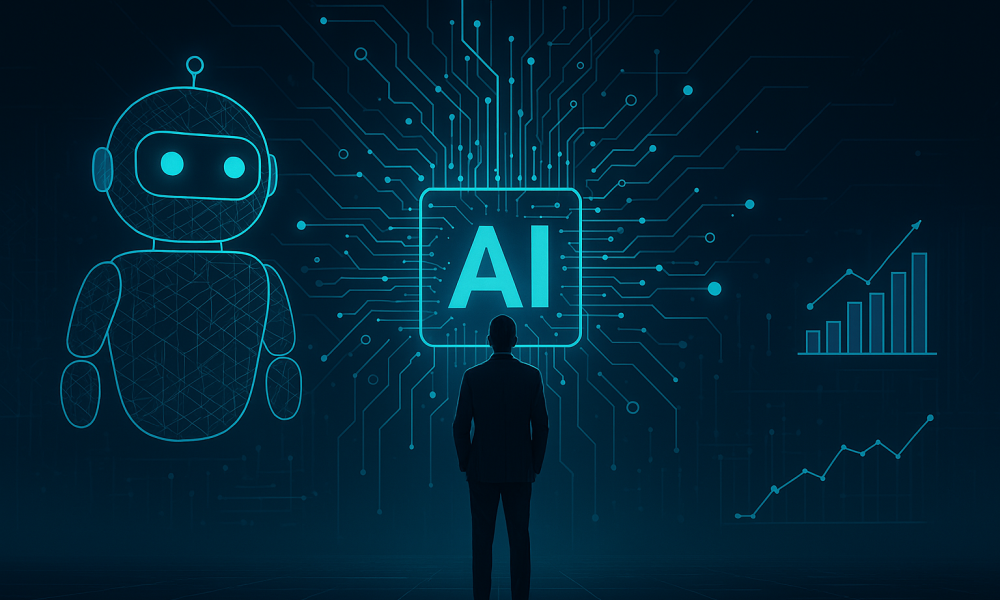From healthcare to manufacturing, AI has become a buzzword that has been dominating boardroom discussions and startup pitches. The hot topic at present is the real value creation by using AI. Real value from AI is derived from AI driving tangible innovations, measurable improvements, and impactful outcomes in solving fundamental industry challenges, driving business efficiencies, and unlocking new business models. To better understand value creation from AI, let’s take a closer look at where it has been making the most impact.
The AI-driven transformation in healthcare is multifaceted, with innovations leading to faster diagnoses, improved patient outcomes, and accelerated drug developments. Imaging tools are seeing drastic improvements in diagnostic accuracy. In tandem with the cost and time reductions that are realized with AI, this improved accuracy will enhance the detection of diseases at early stages.
These are especially good developments for remote clinics and will enable these clinics to handle preliminary diagnoses much better with much lower costs. Perhaps even more important is how AI is revolutionizing drug discovery, protein structure predictions, and our understanding of regenerative medicine, by reducing research timelines from years to months. The McKinsey Global Institute (MGI) has estimated that it could generate a value of $60 billion to $110 billion a year.
The financial services sector has seen some of the most tangible AI-driven improvements in enhancing security, improving investment strategies, and expanding financial access globally. AI-driven improvements have been deployed to analyze transactions in real-time leading to improved detection and prevention of fraudulent activities, cutting fraud rates significantly.
AI-powered robo-advisors are making wealth management services more accessible. AI-driven credit models are expanding banking services to underserved populations by leveraging alternative data points. Nvidia, in its survey, reported that in 2024 alone, 70% of AI adopters in financial services saw a revenue increase of 5% or more, with a dramatic rise in those seeing a 10-20% revenue boost, and more than 60% saw annual cost reduction of 5% or more.
AI has seen major adoption in manufacturing to improve production efficiency, reduce waste, and lower operational costs. The advent of Industry 4.0 has opened continuous streams of immense volumes of data- from IoT sensors in production lines to changing trends in the supply chain. Processing these vast pools of data to get key indicators and performance metrics empowers proactive decision-making but is not humanly possible. This is where AI comes in with real-time analytics to create intelligent, adaptive, and self-optimizing systems.
For example, one key application of AI is in predictive maintenance, which helps manufacturers prevent equipment failures by monitoring machinery performance and detecting signs of wear. AI driven monitoring cuts equipment failures by 70% and increases productivity and efficiency by 25%. This allows manufacturers to keep production running smoothly, avoiding costly repairs and delays.
AI is also improving inventory and logistics management as a demand-forecasting tool by analyzing past sales data and market trends and providing insights to manufacturers. This instant access to insights and reports allows businesses to maintain the right stock levels, reduce waste, and improve profit margins.
Further, AI-powered computer vision systems are being used in quality-control, to better detect defects during production. This technology provides real-time intelligence, enabling factories to rectify quality issues as they arise. These systems can inspect items with high accuracy, reducing defects by up to 90% and ensuring consistent product quality.
AI is revolutionizing education by making learning more personalized, accessible, and effective, bridging gaps in both developed and emerging markets. The AI in education market size was estimated at USD 5.88 billion in 2024 and is projected to grow at a CAGR of 31.2% from 2025 to 2030, driven by the increasing demand for personalized learning experiences.
AI-powered systems can analyze individual learning patterns, strengths, and weaknesses to tailor educational content and recommendations. This capability is particularly valuable in preparing workers for the demands of the digital economy, helping millions of individuals upskill and reskill to remain competitive in a rapidly evolving job market. It is playing a crucial role in addressing the global skills gap.
AI is democratizing and aligning workflows by enabling users with minimal knowledge of other domains to better grasp data points, metrics, and development processes. It enhances mutual understanding between teams; translating feedback, turning technical concepts into accessible insights, and making knowledge transfer more effective. This proactive approach improves employment opportunities and fosters economic growth by equipping the workforce with the competencies needed to thrive in an increasingly digital and automated world.
The real value creation in AI extends far beyond the hype of chatbots and superficial applications. It lies in its transformative potential to address fundamental business challenges. These tangible developments underscore AI’s role as a catalyst for innovation and progress, creating value that is both measurable and transformative. As industries continue to adopt and integrate AI, balancing innovation with ethical AI practices, privacy concerns, and regulatory compliance will be critical.
